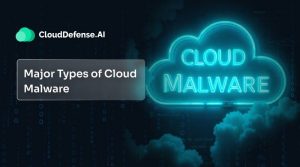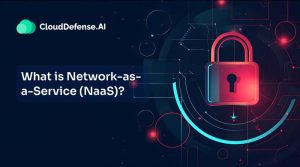Organizations today face a constant barrage of cyber threats—malware, ransomware, and phishing attacks—all vying to infiltrate your systems and steal sensitive data. Even though firewalls and antivirus software form a critical first line of defense, more sophisticated threats demand a more nuanced approach.
Within this approach, three acronyms have emerged as crucial tools for security professionals: EDR, MDR, and XDR. While all three focus on cybersecurity, they differ in their scope, data sources, and level of response. While all three focus on cybersecurity, they differ in their scope, data sources, and level of response.
Keep reading as we decipher the key differences between EDR vs. MDR vs. XDR, helping you understand which solution best safeguards your organization in the ever-evolving threat landscape. Let’s dive right in!
Understanding EDR, MDR, and XDR
Understanding the distinctions between EDR, MDR, and XDR is essential for building a robust cybersecurity strategy. Let’s delve into what each acronym represents:
What Is EDR?
EDR stands for Endpoint Detection and Response. It functions as a software solution deployed on individual devices like laptops, desktops, and servers. EDR acts as a vigilant guardian, continuously monitoring endpoint activity for suspicious behavior that might indicate a cyberattack.
Using advanced analytics, EDR can detect malware execution, unauthorized access attempts, and other malicious activities. Upon detecting a threat, EDR empowers security teams to investigate the incident, isolate the infected endpoint, and take corrective actions to contain the damage.
Benefits of EDR
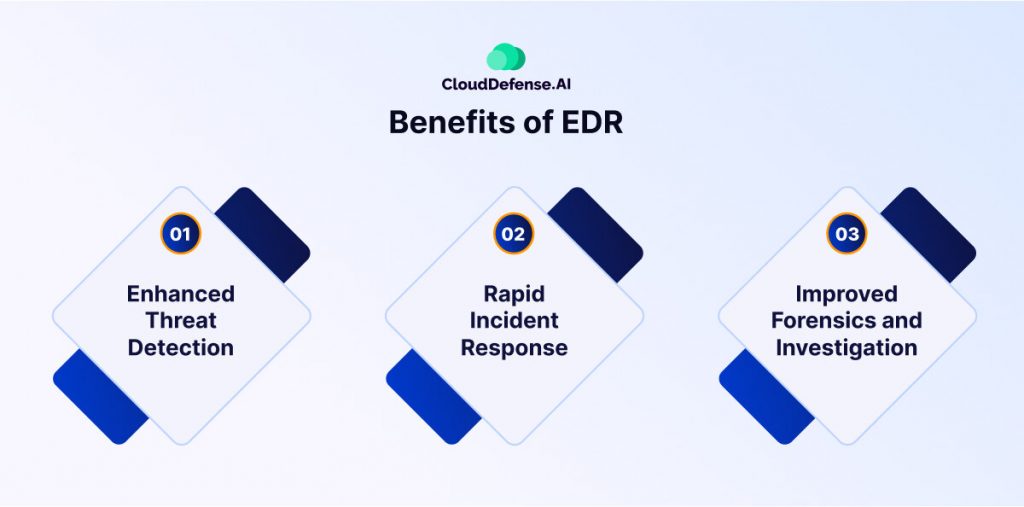
Enhanced Threat Detection: EDR goes beyond traditional antivirus by employing advanced techniques like behavioral analysis. This allows it to identify suspicious activities, even zero-day attacks, that wouldn’t trigger traditional antivirus alerts. Imagine a scenario where an unknown malware attempts to access unauthorized files on a user’s laptop. EDR’s behavioral analysis might detect this anomaly and flag it for investigation, preventing potential data breaches.
Rapid Incident Response: EDR empowers security teams to quickly isolate and contain threats on infected endpoints. For instance, EDR can automatically quarantine an infected device, preventing it from spreading malware laterally across the network. This rapid containment action can minimize the damage caused by a cyberattack.
Improved Forensics and Investigation: EDR solutions collect detailed logs of endpoint activity, providing valuable forensic data for security teams. These logs can be analyzed to understand the root cause of an incident, identify the scope of the attack, and determine the best course of action for remediation.
What Is MDR?
MDR, or Managed Detection and Response, takes the concept of EDR a step further. It’s essentially EDR as a service. MDR providers leverage EDR technology alongside their expertise and security infrastructure to offer a comprehensive detection and response solution. Organizations lacking in-house security resources can outsource their security operations to MDR providers.
These providers continuously monitor endpoint activity, analyze security alerts, investigate potential threats, and take action to neutralize them. MDR services often extend beyond endpoints, encompassing network security monitoring and threat intelligence to provide a broader security posture.
Benefits of MDR
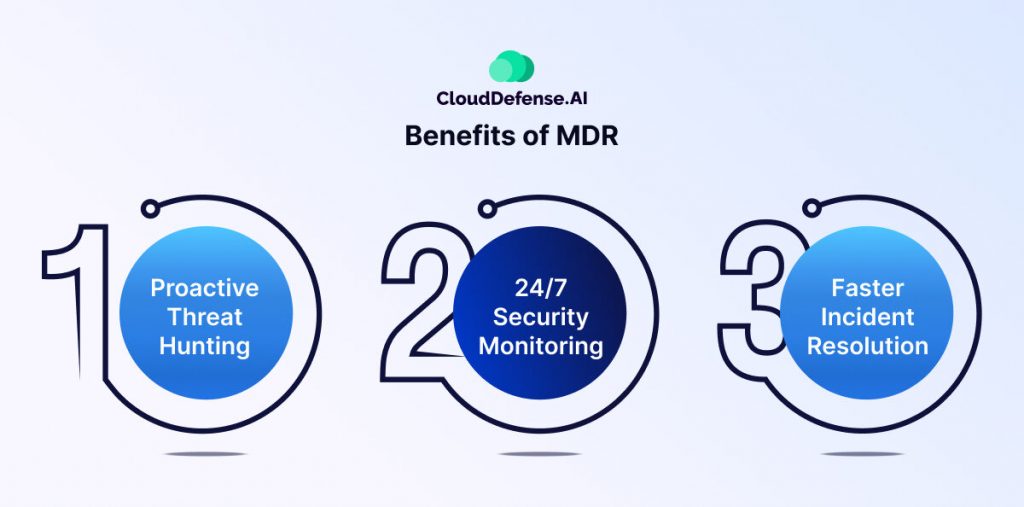
Proactive Threat Hunting: MDR goes beyond reactive threat detection. Security analysts use their expertise and threat intelligence feeds to actively hunt for potential vulnerabilities and hidden threats within your network. Imagine a scenario where a sophisticated attacker has already infiltrated your network but hasn’t yet launched their attack. MDR’s proactive hunting capabilities might uncover this hidden threat, allowing you to take preventive measures before any damage occurs.
24/7 Security Monitoring: MDR offers a significant advantage for organizations with limited security staff. Security professionals monitor your network around the clock, ensuring that threats are identified and addressed promptly, even outside of regular business hours. This continuous vigilance provides peace of mind and minimizes the window of opportunity for attackers.
Faster Incident Resolution: MDR teams have the expertise and experience to quickly analyze and respond to security incidents. This reduces the time it takes to contain a threat and minimize damage. For example, in the case of a ransomware attack, an MDR provider can help you isolate infected systems, restore critical data from backups, and negotiate with attackers if necessary.
What Is XDR?
XDR, standing for Extended Detection and Response, represents the next generation of security solutions. While EDR focuses on endpoints and MDR builds upon it, XDR offers a more expansive approach. XDR solutions ingest data from a wider range of sources, including endpoints, network devices, cloud workloads, and user activity.
By consolidating data from these diverse sources, XDR provides a unified view of security events across the entire IT infrastructure. This comprehensive view empowers security teams to detect and respond to threats more effectively by identifying subtle patterns and connections that might be missed by analyzing data from individual sources.
Benefits of XDR
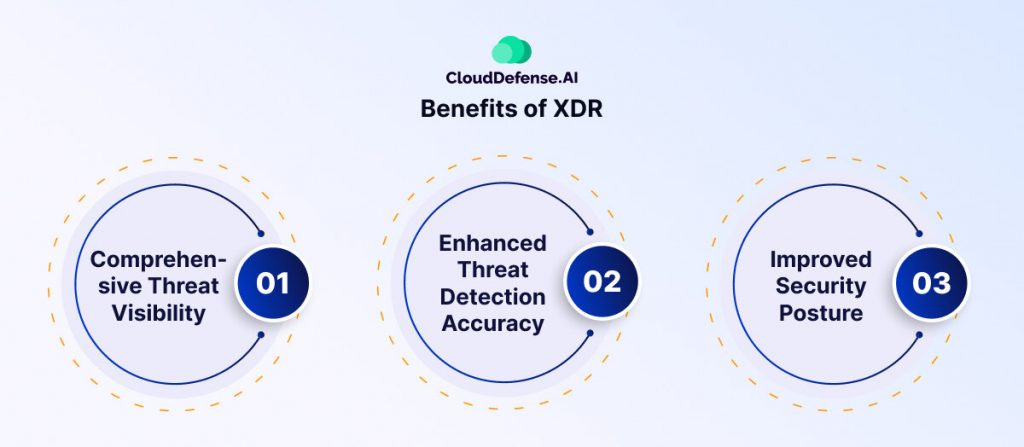
Comprehensive Threat Visibility: XDR provides a unified view of security data from across your entire IT infrastructure. This eliminates the silos of information often present within traditional security solutions.
Imagine a scenario where a phishing email lands in an employee’s inbox (email security data) and then clicks a malicious link that downloads malware onto their laptop (EDR data). By correlating data from both sources, XDR can identify this coordinated attack and provide a complete picture of the threat.
Enhanced Threat Detection Accuracy: By analyzing data from a wider range of security tools, XDR can reduce the number of false positives that plague traditional security solutions. This allows security teams to focus on genuine threats and improve their overall incident response efficiency.
For instance, XDR might correlate network traffic data with endpoint activity, helping to distinguish legitimate remote access attempts from suspicious connections indicative of a potential breach.
Improved Security Posture: The comprehensive threat insights gleaned from XDR empower organizations to proactively strengthen their security posture.
By identifying vulnerabilities across various security domains, organizations can prioritize patching and remediation efforts to minimize their attack surface.
EDR vs. MDR vs. XDR: A Side-by-Side Comparison
Choosing the right security solution requires a clear understanding of the strengths and limitations of EDR, MDR, and XDR. The following table provides a comprehensive comparison across various parameters:
| Feature | EDR | MDR | XDR |
| Focus | Individual Endpoints (laptops, servers, mobiles) | Network-wide security across various sources | Entire IT infrastructure (EDR data + network data + security tools) |
| Data Sources | Endpoint activity logs | EDR data + Logs from various security tools | Data from EDR, network security tools (firewalls, IDS), SIEM, cloud workloads |
| Security Staff Required | Requires in-house security expertise to analyze and respond to alerts | Leverages a team of MDR security analysts | May require in-house expertise for advanced analysis, but reduces burden on security staff |
| Threat Detection | Focuses on endpoint-specific threats (malware, suspicious behavior) | Broader threat detection capabilities across the network | Most comprehensive threat detection by correlating data from diverse sources |
| Incident Response | Offers automated containment measures on endpoints | Provides faster incident response with expert guidance | May offer automated response based on pre-defined rules, but MDR expertise allows for more nuanced response |
| Cost | Generally lower cost than MDR and XDR | More expensive than EDR due to managed service component | Most expensive due to broader data ingestion and potential for additional security analyst involvement |
| Benefit for Small Businesses | Can be valuable for basic threat detection and containment on endpoints | May be cost-prohibitive for smaller organizations with limited security staff | Potentially overwhelming for smaller businesses due to data complexity, but can be valuable with MDR integration |
| Benefit for Large Enterprises | Scalable solution for endpoint security, but may require additional tools for broader threat visibility | Ideal for organizations lacking in-house security expertise or needing 24/7 monitoring | Provides the most comprehensive threat detection and mitigation capabilities for large, complex IT environments |
Which Security Solution is Right for Me?
Considering the above-discussed parameters, selecting the right security solution from EDR, MDR, and XDR can feel like navigating a complex maze. Here’s a breakdown to help you choose the best fit for your organization:
Consider these factors:
- Security Maturity: Do you have a well-staffed and experienced security team, or are you resource-constrained?
- IT Infrastructure Complexity: How extensive is your network environment? Do you have a mix of on-premise and cloud deployments?
- Budget: What is your allocated budget for cybersecurity solutions?
Here’s a quick guide to help you decide:
Choose EDR if:
- You have a strong internal security team with the expertise to analyze and respond to EDR alerts.
- Your primary concern is protecting endpoints from malware and suspicious activity.
- You have a limited budget for security solutions.
Choose MDR if:
- Your security team is stretched thin or lacks the expertise to manage EDR daily.
- You require 24/7 threat monitoring and response capabilities.
- You want proactive threat hunting to identify potential vulnerabilities before they are exploited.
Choose XDR if:
- You have a large and complex IT infrastructure with diverse security tools.
- You need a unified view of security data across your entire network for comprehensive threat detection.
- You have the budget and security staff to handle the complexity of XDR data analysis and the potential for additional security analyst involvement.
Overall,
- Focus on endpoint security and have in-house security expertise: EDR
- Need 24/7 threat monitoring and lack in-house security staff: MDR
- Prioritize comprehensive threat visibility across your entire IT infrastructure and have the budget and security staff to support it: XDR
Remember:
- EDR can be a stepping stone to more advanced solutions like XDR. Many MDR providers offer EDR functionality as part of their managed service package.
- Consider a hybrid approach. You can combine EDR with MDR services for specific security needs, or XDR with additional MDR support for enhanced threat analysis and response.
However, the most important takeaway is to prioritize your organization’s security needs and choose a solution that provides the right level of protection and best suits your budget and security expertise.
Conclusion
Cybersecurity practices are constantly evolving with time, demanding a layered approach to defense. EDR, MDR, and XDR offer valuable tools in the fight against cyber threats. By understanding their strengths and limitations, you can choose the solution that best safeguards your organization’s critical assets.
Remember, staying ahead of the curve in cybersecurity is more crucial than ever, considering the current threat front. CloudDefense.AI‘s industry-leading CNAPP platform provides comprehensive protection from code to the cloud. Our CNAPP solution not only secures your cloud-native applications but also offers 360-degree visibility across your entire cloud infrastructure.
Ready to experience the power of CloudDefense.AI? Book a free demo today and discover how our CNAPP platform can empower your organization to confidently navigate the ever-changing threat landscape.

